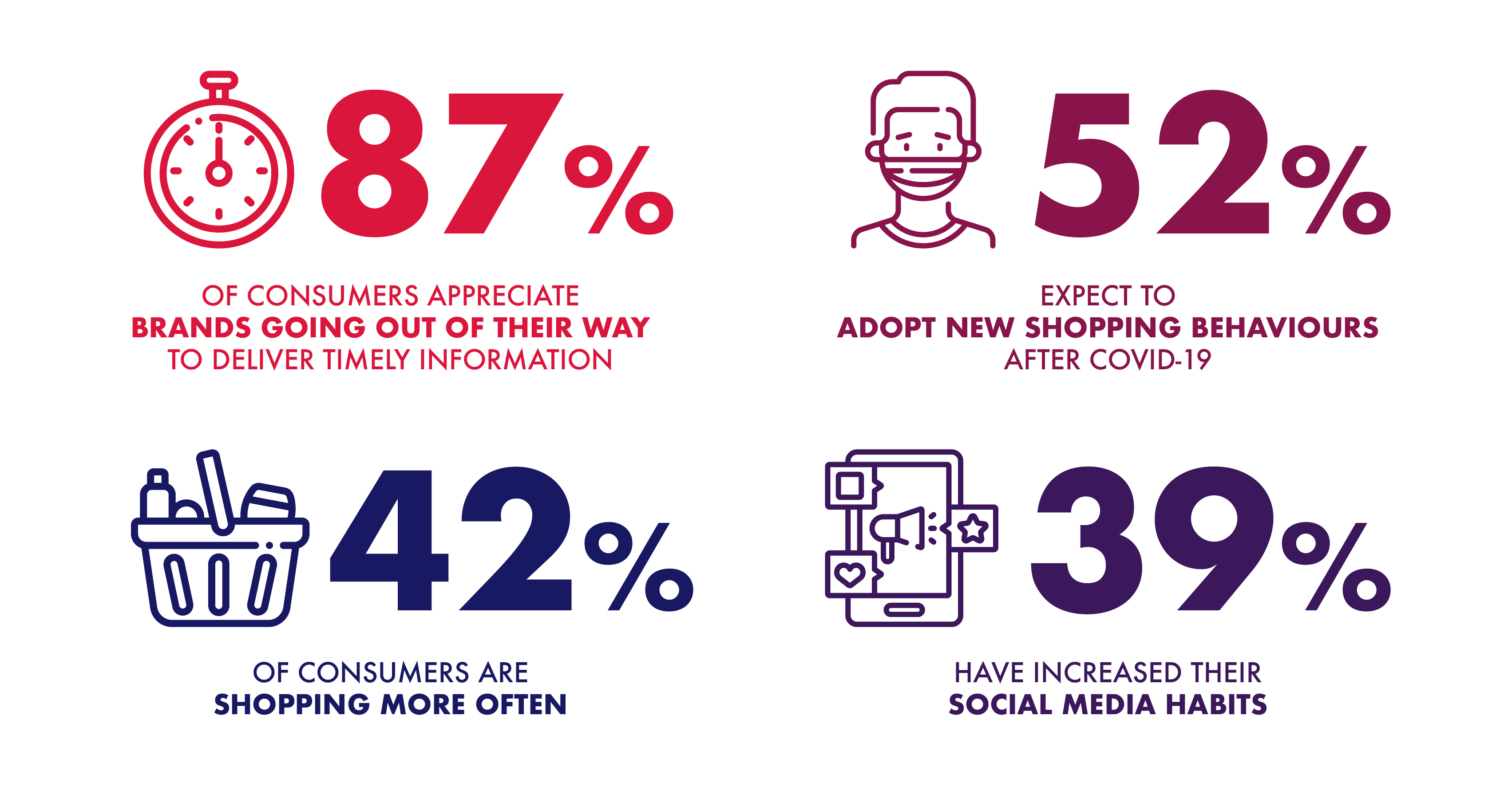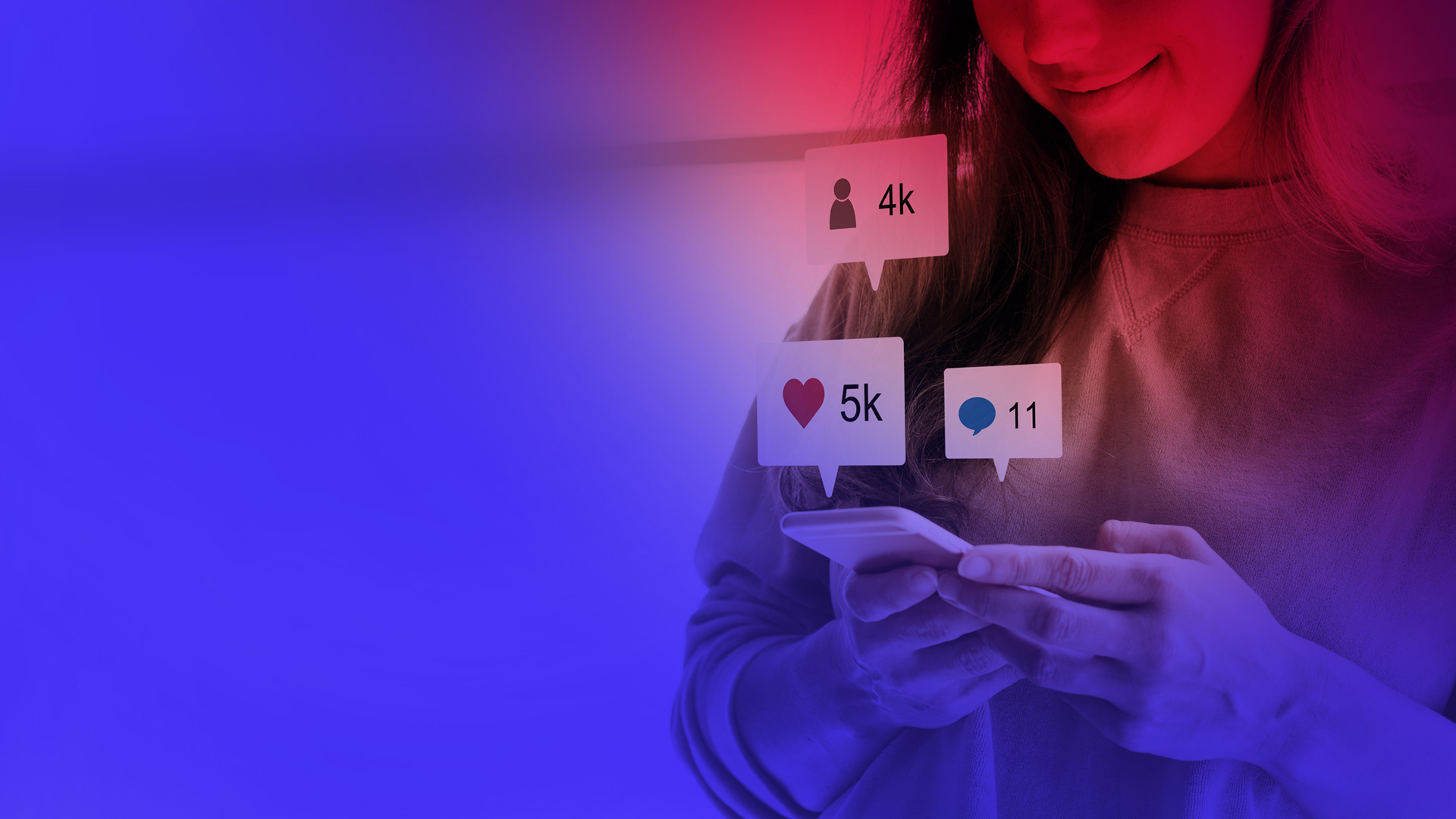The New State of Social Media Platforms
During these unprecedented times, COVID-19 has set a new standard across all levels. Whether it be how a person shops in our new normal, how they engage with people they know, brands and retailers they adore, or even how they absorb new information, the pandemic has set a new tone for how we interact with the world.
That said, at the height of COVID-19 as many found themselves hunkered down in their homes due to mandated stay-at-home orders, new human behaviors started to emerge as they adapted to what would be the new normal that we know today.
Most people became more mindful of their spending habits by sticking to the essentials. But then self-care indulgences became a thing and so did at-home workouts.
The constant behavior through the pandemic was, however, the activity on social media. In fact, during this period, most people have found themselves spending much more time on social media.
Consumer Behavior Shift with COVID-19

So, how does a brand or company make the most out of their social media platforms in our new normal?
Let us review key platforms, shall we?
TikTok - A new way to story tell
The shining star through the pandemic has surely been TikTok. The social platform is mostly popular with Gen-Z and Millennials and has caused major headlines with the U.S. government still in debates on whether or not the application should be banned in the United States.
But in terms of the popularity of TikTok, the pandemic has in a way presented brands of all kinds with an opportunity to branch out beyond Facebook and Instagram. To date, the application has more than 800 million active users and has been downloaded more than 1.5 billion times. Gen-Z reportedly makes up 40 percent of TikTok’s current fanbase, with 90 percent of whom reportedly use the app more than once a day.
For brands looking to incorporate TikTok into their marketing strategy and engage with Gen Z, engage in video “challenges” to start and don’t be so quick to push your product as this generation won’t think twice about calling you out.
To truly resonate with Gen Z, brands must really focus on building and nurturing their relationships with this audience. This generation looks for brands that can create a sense of community and create personalized messaging.
Just some of the many brands to already incorporate TikTok into their marketing strategy are Nike, Apple, a beauty brand called Charlotte Tilbury and a beauty subscription box, Ipsy.
Pinterest - The home of rich content
Pinterest has always been a great channel for fashion, beauty and lifestyle brands. So, whether you’re looking to create a fashion look book and break it out into various Pinterest pins or sharing some of your most coveted recipes, creating rich content is critical. But full disclosure, if you’re looking for immediate conversions, Pinterest is more of a long-term investment, so patience and consistency is key.
Instagram - The itch to stay relevant
With its latest series of rollouts, Instagram Checkout and Reels, Instagram is aiming to stay as relevant as possible. At this point, strategies incorporated into TikTok should also be made into Instagram Reels, especially with the uncertainty around the Beijing-based app.
In terms of Instagram Checkout, if you’re selling a product, you should offer Instagram Checkout as an option to your followers. At the height of the pandemic, Instagram Checkout played a critical role in transactions for beauty and makeup company Sephora. The integration allows shoppers to make direct purchases on the brand or retailer’s feed or through Instagram stories.
Facebook - The OG of social media platforms
Facebook plays a critical role for many brands and companies despite their target demographic. While the audience on Facebook tends to be older, many brands still find themselves keeping a minimal but decent presence on the platform even if the audience isn’t their ideal target. Why? Because Facebook has become the ultimate staple of social media. It’s the one platform that has remained. That said, 80 percent of all Internet users use Facebook. More so, 65 percent of adults over the age of 65 reportedly use Facebook.
So, how does that make sense for your Brand?
Facebook has billions of users and most of them tend to check their Facebook page multiple times a day. So regardless of who your customers are, they are most likely using Facebook.
Your brand can really leverage Facebook when it comes to advertising. Facebook has the ability to reach your exact audience and is provides the most targeted form of advertising, to-date.
Twitter - For the news
If you’re going to dabble in Twitter, do it right. Tweets have a lifespan of 2-3 seconds. So that one tweet you sent out today and nothing after, did nothing for you or your brand. In fact, you were probably better off not sending the tweet at all.
Twitter requires your messages to be in bite-sized form and requires some form of consistency.
For brands who aren’t sure about what they should be tweeting, start with the basics. Consider company updates, rounds of funding, product launches and even customer service queries.
So, how will your Brand use social in our New Normal?
